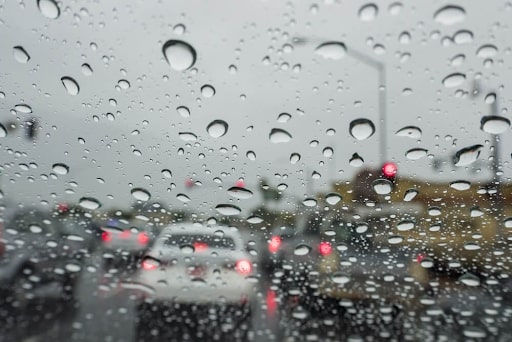Driving in a heavy rainstorm isn’t as difficult as you may think. If you follow these simple tips, you’re sure to make it home safe and sound.
1. Slow Down
To reduce your chances of having an accident or skidding, slow down. Driving slower will give you more time to react if another driver loses control and gets into an accident.
It also reduces the pressure on your tires, decreasing your risk of losing control when driving through standing water or puddles (hydroplaning).
Slowing down will also help ensure that others can see your vehicle and avoid hitting it if they suddenly brake or skid on wet pavement.
Avoid changing lanes and passing in heavy rain. Other drivers could be having a harder time seeing than you do, and passing or changing lanes increases your chances of causing an accident.
This is especially true of big vehicles like semi trucks or buses. Getting into an accident with these types of vehicles is scary. Get professional help from JT Legal to protect yourself in this event.
Read also: 5 Reasons Why Car Transportation Companies in Rhode Island Is You Best While Moving
2. Keep a Safe Distance
When driving, keeping a safe distance from the car ahead of you is crucial. But in heavy rain, you should leave an even greater distance than usual between your vehicle and the one in front of you.
If they hydroplane or skid, they could lose control and drive off the road. If this happens to a car behind them, it could cause a chain reaction that causes a serious crash.
The only time you should even consider getting close to another car on the road is if emergency vehicles are behind trying to get by, and you need to let them pass.
3. Avoid Flooded Roads
Avoiding flooded roads is a good idea. Heavy rainstorms can cause flash flooding, meaning that water has built up faster than the ground can absorb.
This can lead to extremely hazardous conditions for drivers who aren’t aware of how much danger they may be in. Times like these are when many cars get stuck, and those in the car are in danger of drowning with no way out.
If there’s no way around a flooded road, try to drive very slowly through it. Stop immediately if you feel like your tires are starting to lose their grip on the road.
Try backing up, and if your tires just spin, get everyone out of the vehicle and to dry land.
Read also: Useful Things To Understand Before Auto Shipping Boston To Texas
4. Use Your Lights
The first step to driving in a heavy rainstorm is turning on your headlights, even in daylight. You may be able to see the road, but other drivers might not be able to see you.
In addition to using your headlights, also use your fog lights if visibility drops below 30 feet in front of you. If conditions get worse and visibility becomes limited above 500 feet ahead of you, turn on your high beams as well.
If driving in a heavy rainstorm, you should also ensure that your windshield wipers are working properly. If they aren’t working well enough, try cleaning them off with a cloth or paper towel.
Faulty windshield wipers can make it that much more difficult to see in a heavy rainstorm.
5. Keep Your Eyes on the Road
You should keep your eyes on the road. Don’t look at the rain, traffic, or your phone. Don’t look at the wipers or speedometer either. Just focus on where you’re going and drive accordingly.
If you’re having trouble staying in control, take a break and pull over somewhere safe when possible.
A little distraction can cause a big disaster, especially when the conditions are already dangerous.
Read also: How to Choose the Best Car Transportation Company in Pennsylvania
6. Don’t Slam On Your Brakes
When you see an oncoming car coming in the opposite direction, don’t panic. Don’t swerve. Don’t slam on your brakes.
The last thing you want to do is slam on your brakes because that will cause your tires to hydroplane and lose traction with the road making it impossible for you to stop at all.
Keep a steady pace behind other cars (but not too close), slow down gradually if necessary, and do everything else as normal until you have reached your destination safely.
Conclusion
If you drive in a heavy rainstorm, be sure to take extra care so that you don’t cause an accident.
Keeping your eyes on the road and slowing down are good ways to avoid accidents. If flooding is too severe, it might be better just to pull over until it passes.
Read more interesting articles at Times Of World


























































